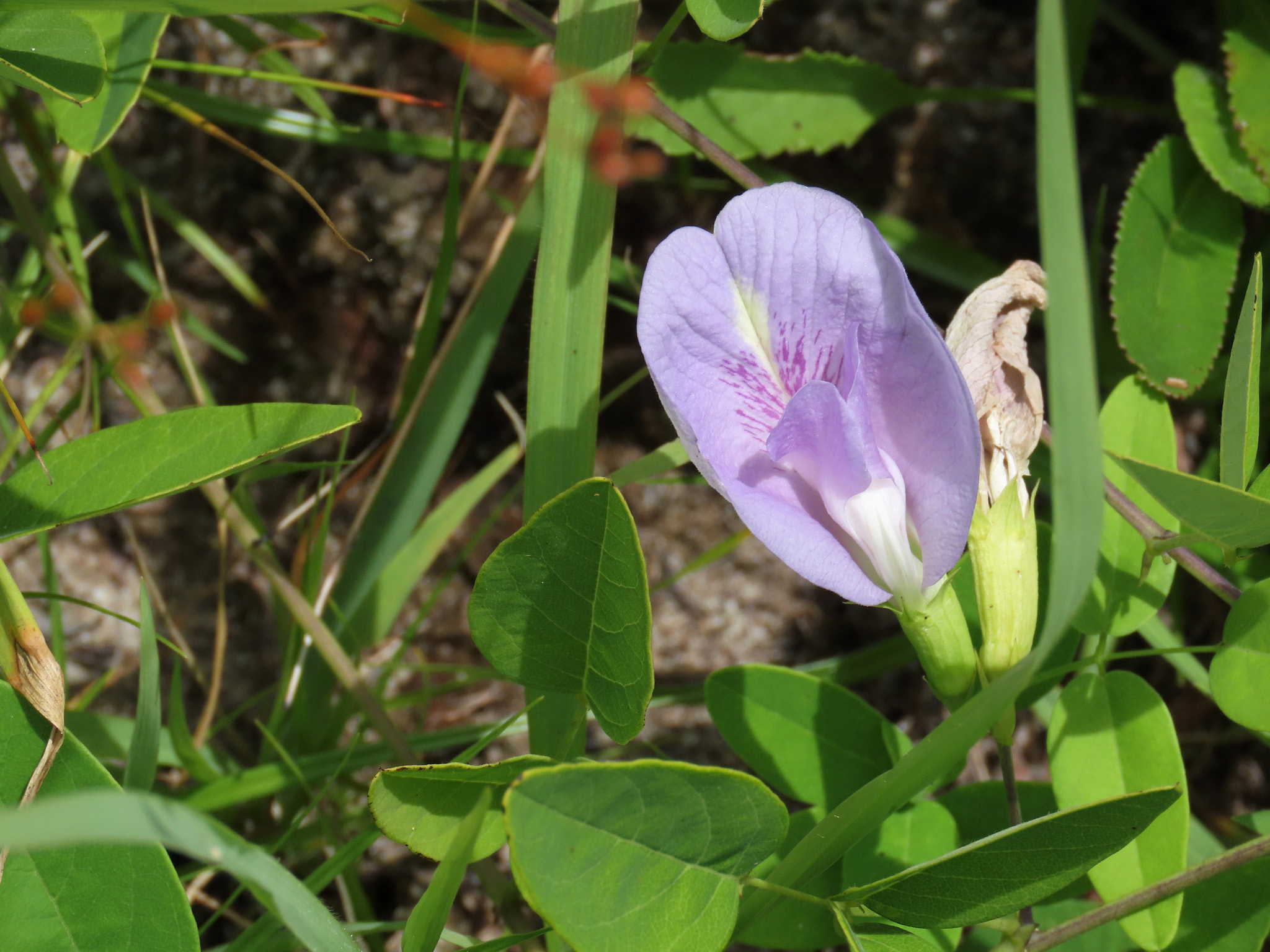
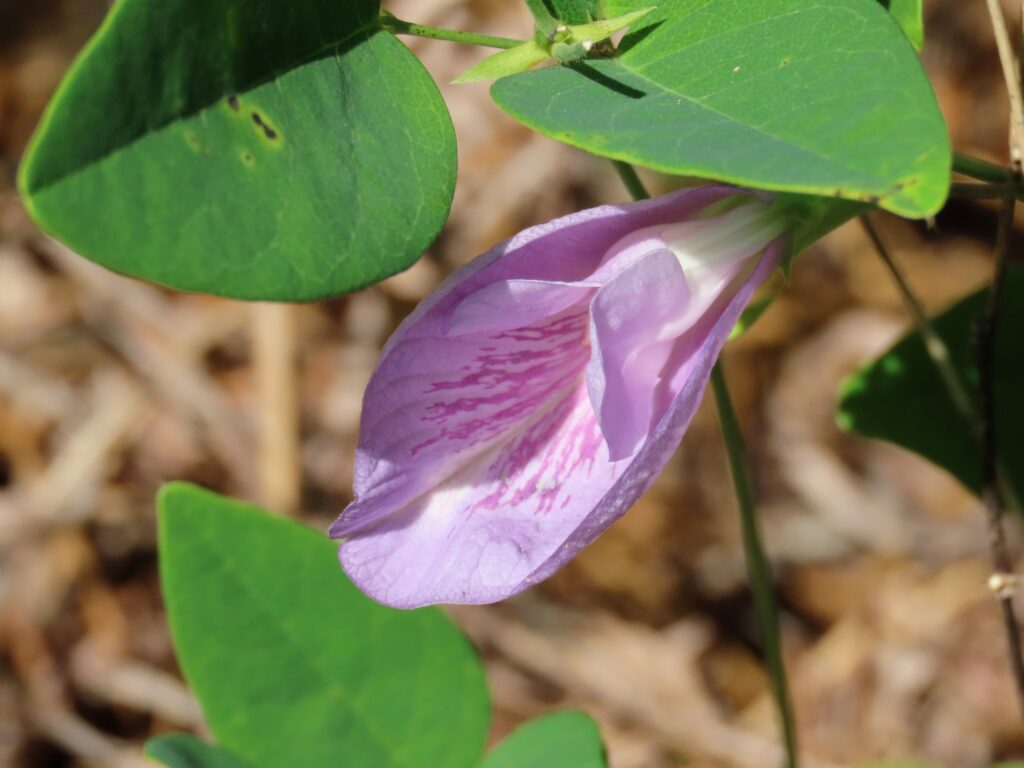
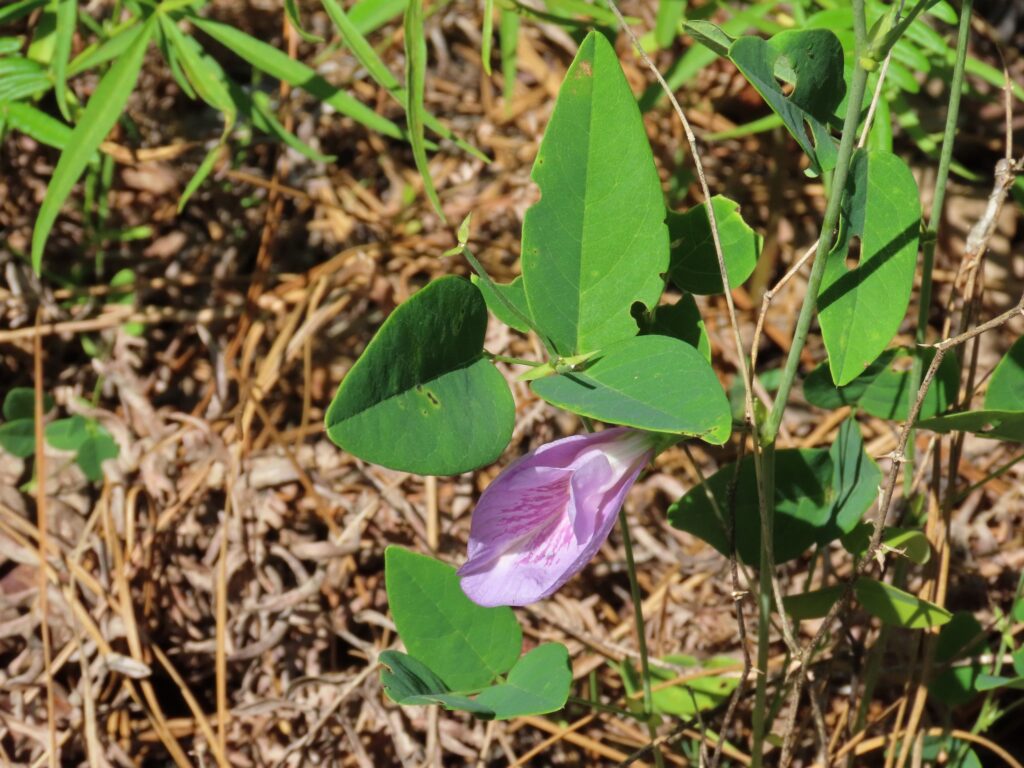
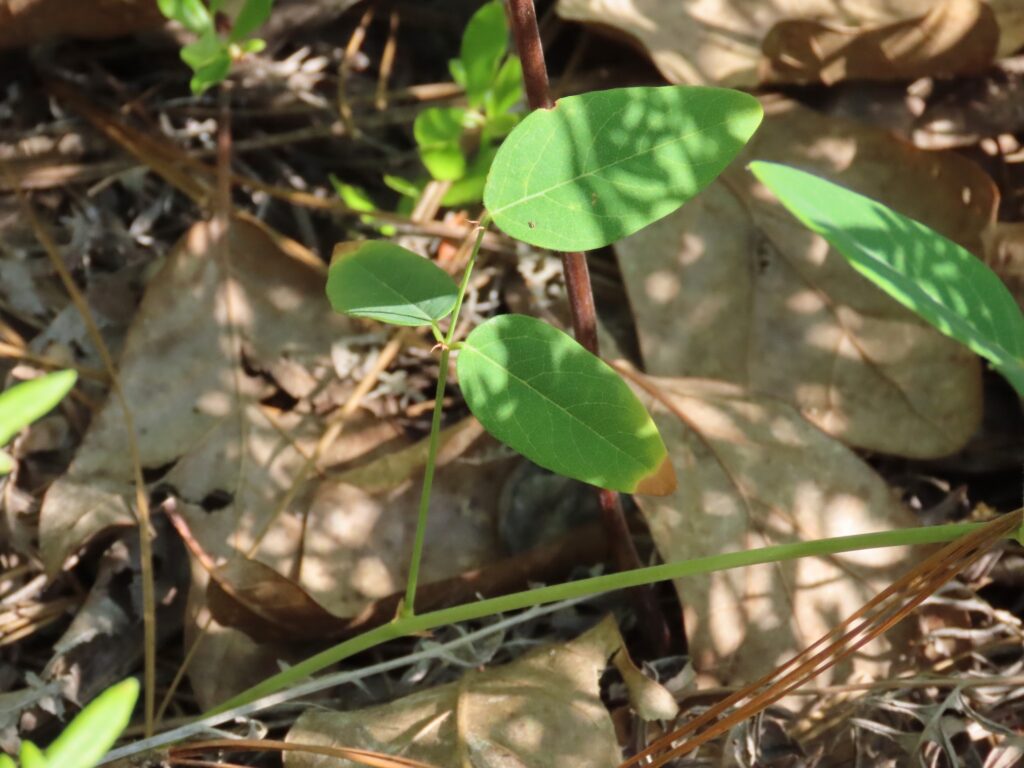
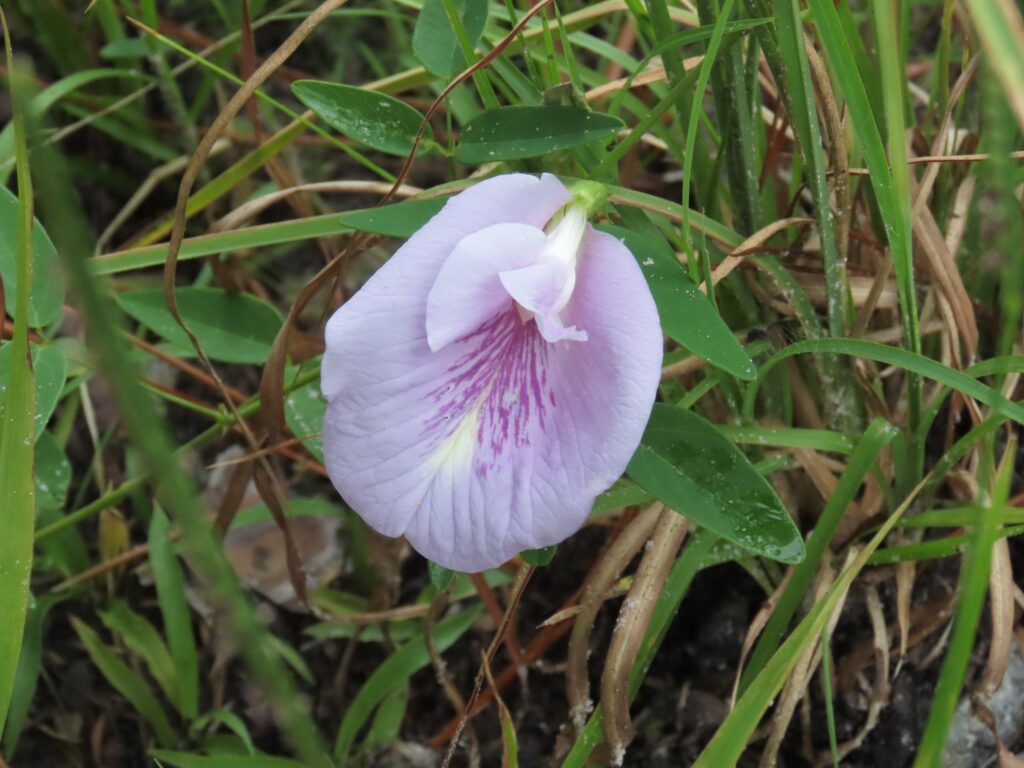
This week for Flora and Fauna Friday we have another of our large and lavish lavender legumes, Atlantic Pigeonwings (Clitoria mariana).
Atlantic Pigeonwings is a species of legume found throughout the southeastern United States and all of South Carolina. It’s most abundant on dry, sandy soils and is thus found on barrier islands, high sand ridges on the Sea Islands, and Longleaf Pine savannas on the mainland. Being a legume, it has a leg up in these thin sandy soils through its ability to fix nitrogen. Legumes are able to trade sugars to the symbiotic bacteria living inside their roots, which in turn fix nitrogen from the air. Atlantic Pigeonwings is a perennial vine that grows a small tuberous rhizome underground and a thin, wiry stem above the earth. The vine climbs through twining but rarely reaches above ankle high, more often snaking across the soil as a groundcover. Its leaves are alternate and compound, composed of three simple leaflets. There’d not be much to show for this plant if it wasn’t for it showy flowers.
Atlantic Pigeonwings’ bloom time starts in June, peaks in July, and lasts through August. Its flowers are about an inch long and twice as wide. They have that classic pea-flower form of one large lower petal and two smaller upper petals, which form a hood over the anthers and stigma. The petals are all a pale-lavender in color, with the lower petal possessing a streak of white down the center that’s flanked by bowing brindled bands of a darker purple-mauve. Atlantic Pigeonwings’ flowers are specially shaped to guide Bumble Bees straight to their anthers, forcing them to take a dusting of pollen if they’d like a sip of nectar. However, many butterflies are able to cheat this system, using an elongated proboscis like a silly-straw to steal sips at a distance. One specific butterfly, the Long-tailed Skipper (Urbanus proteus), also hosts on Atlantic Pigeonwings, laying eggs on its leaves and its caterpillars then munching away at the foliage and flowers.
Atlantic Pigeonwings has a very similar looking cousin who also grows across the Southeast, Spurred Butterfly Pea (Centrosema virginianum). I’ve covered that species previously and it differs in a few key ways from today’s Pigeonwings. Spurred Butterfly Pea is more shade tolerant, grows in damper soils, has wider leaves, climbs higher, and has a flower that’s nearly circular and with no purple streaking on the lower petal.